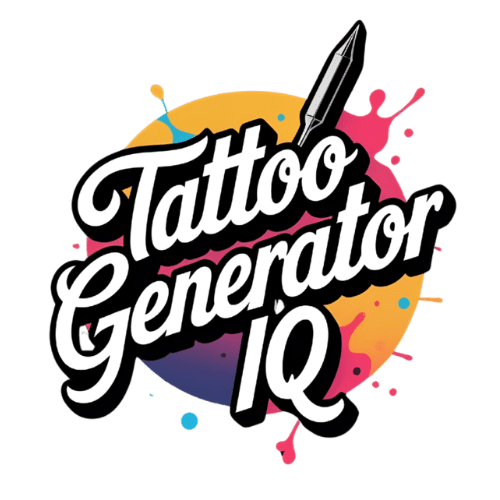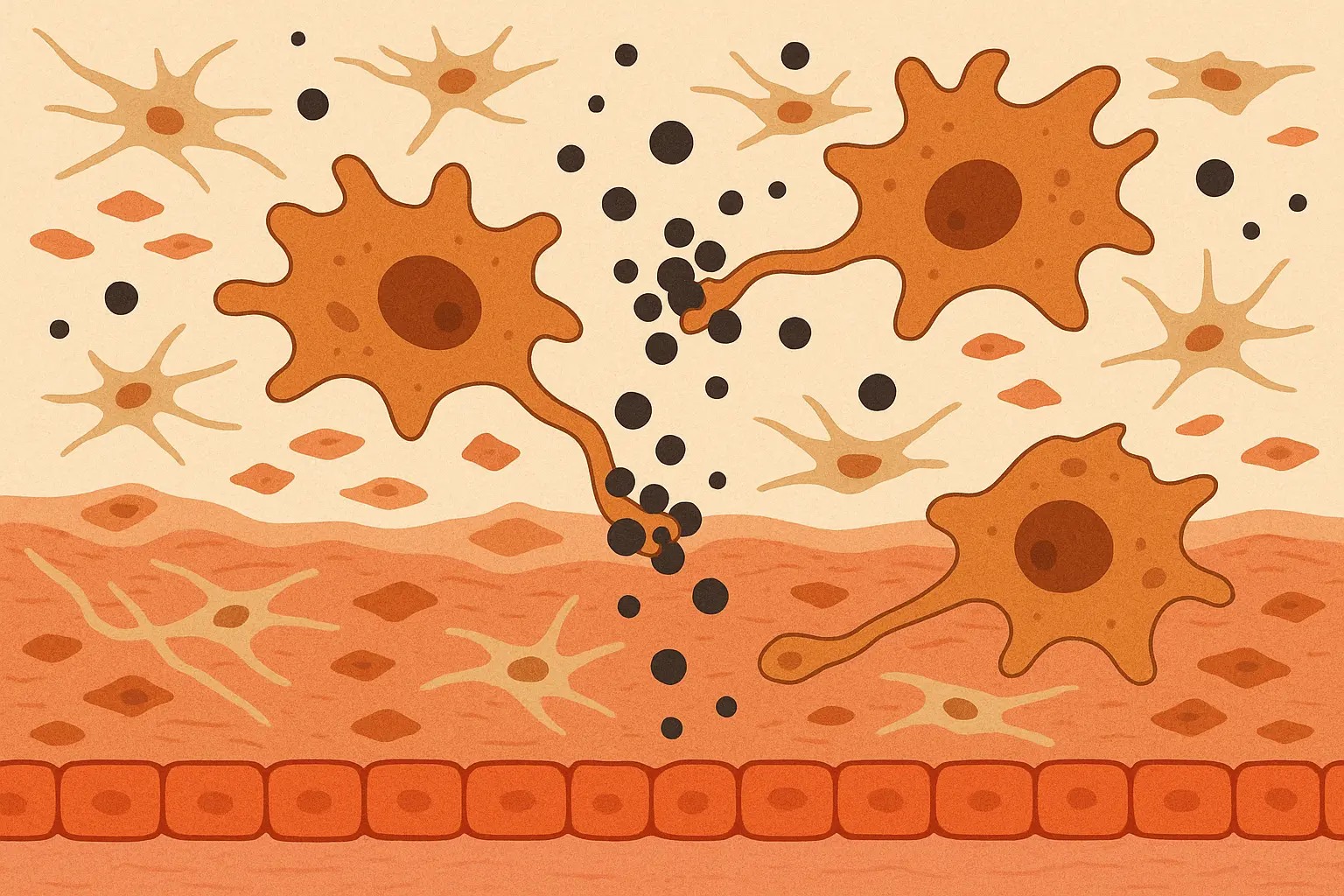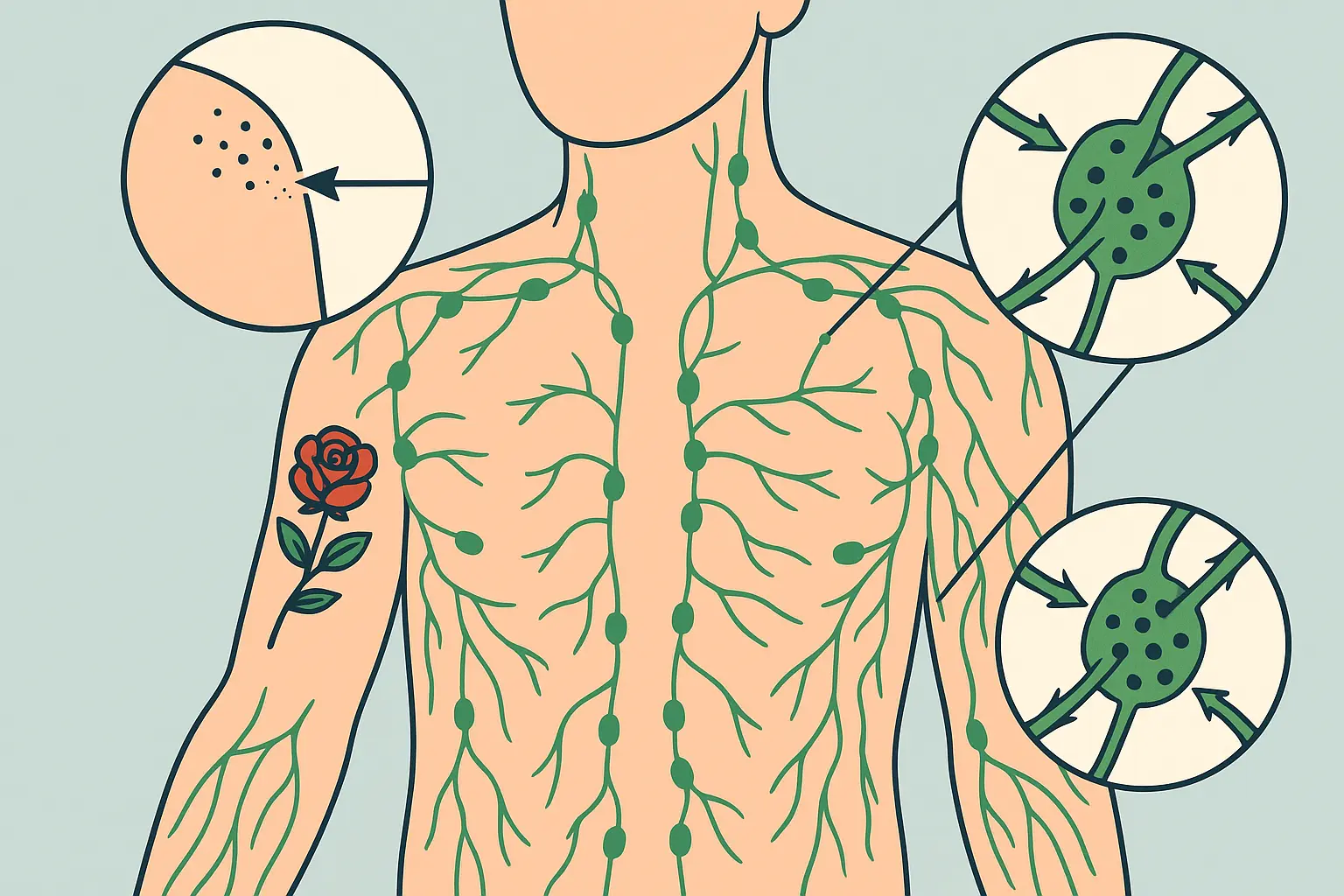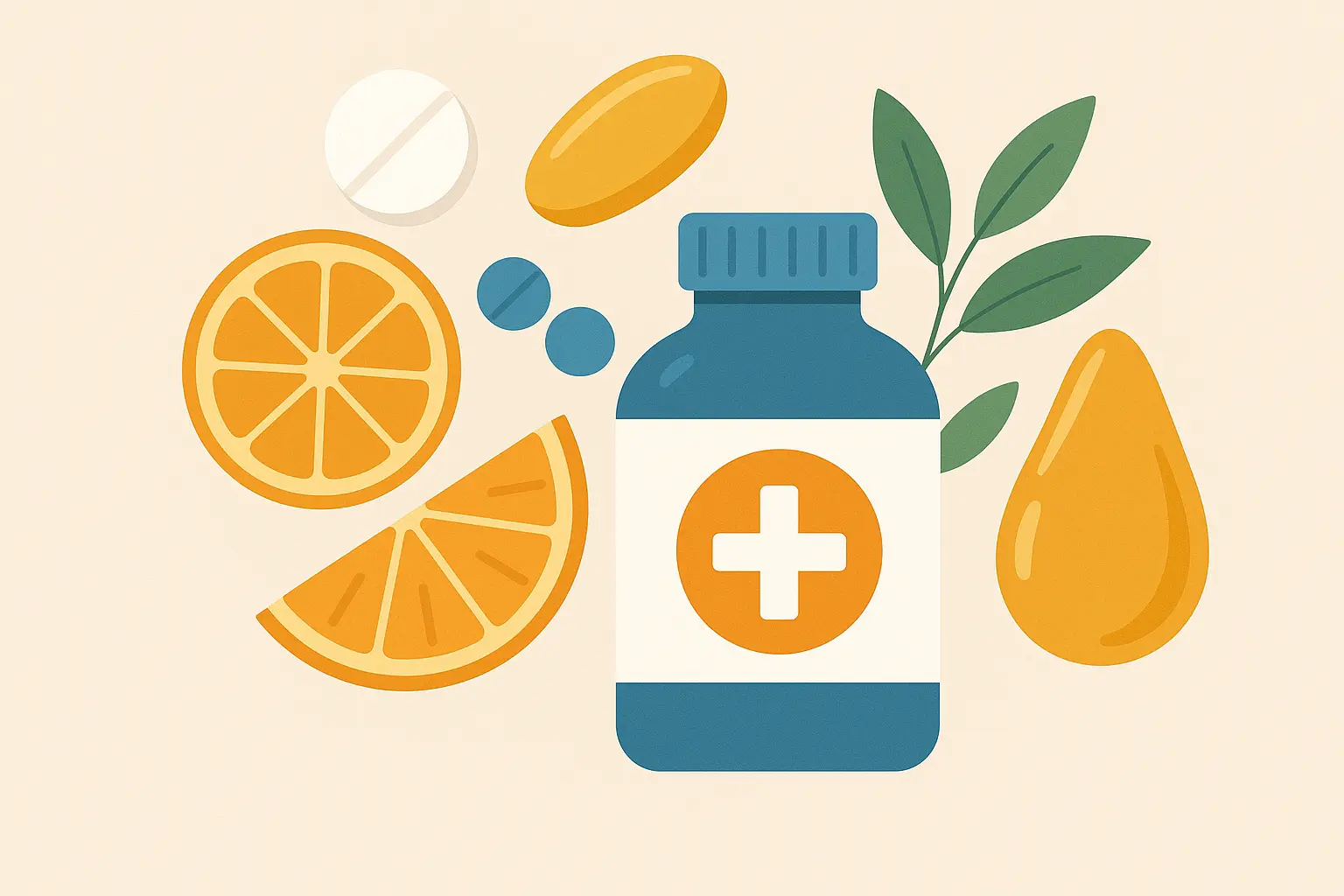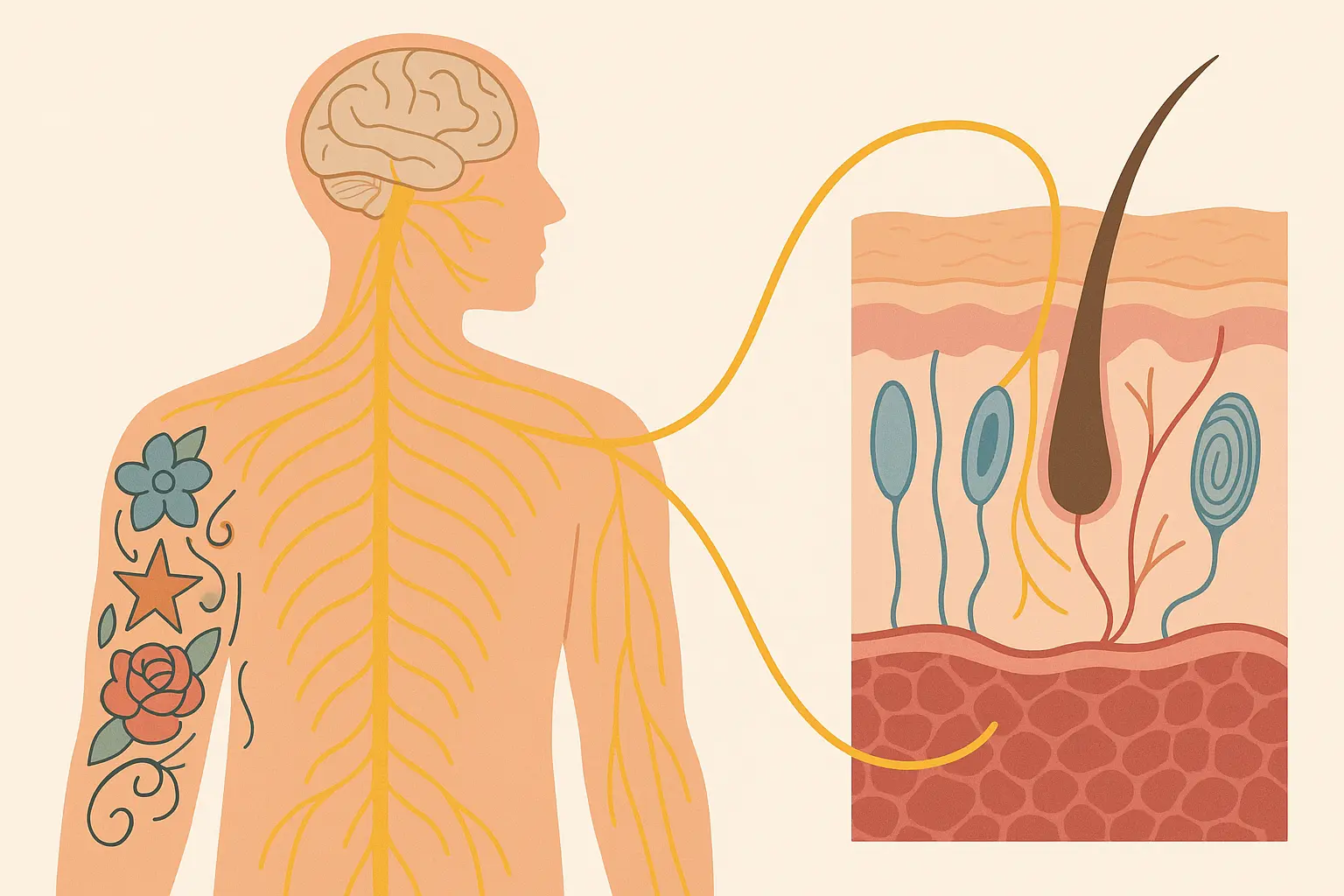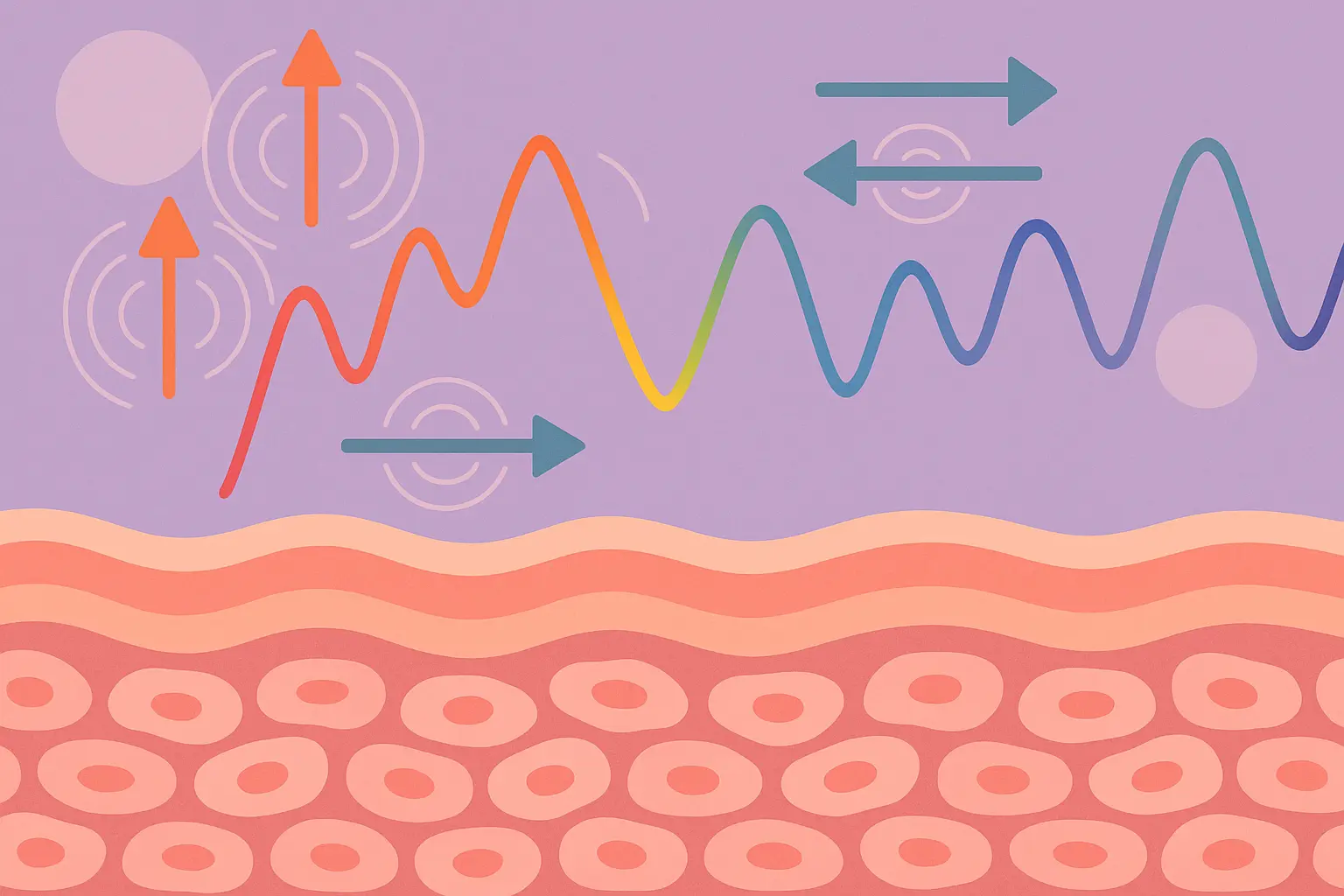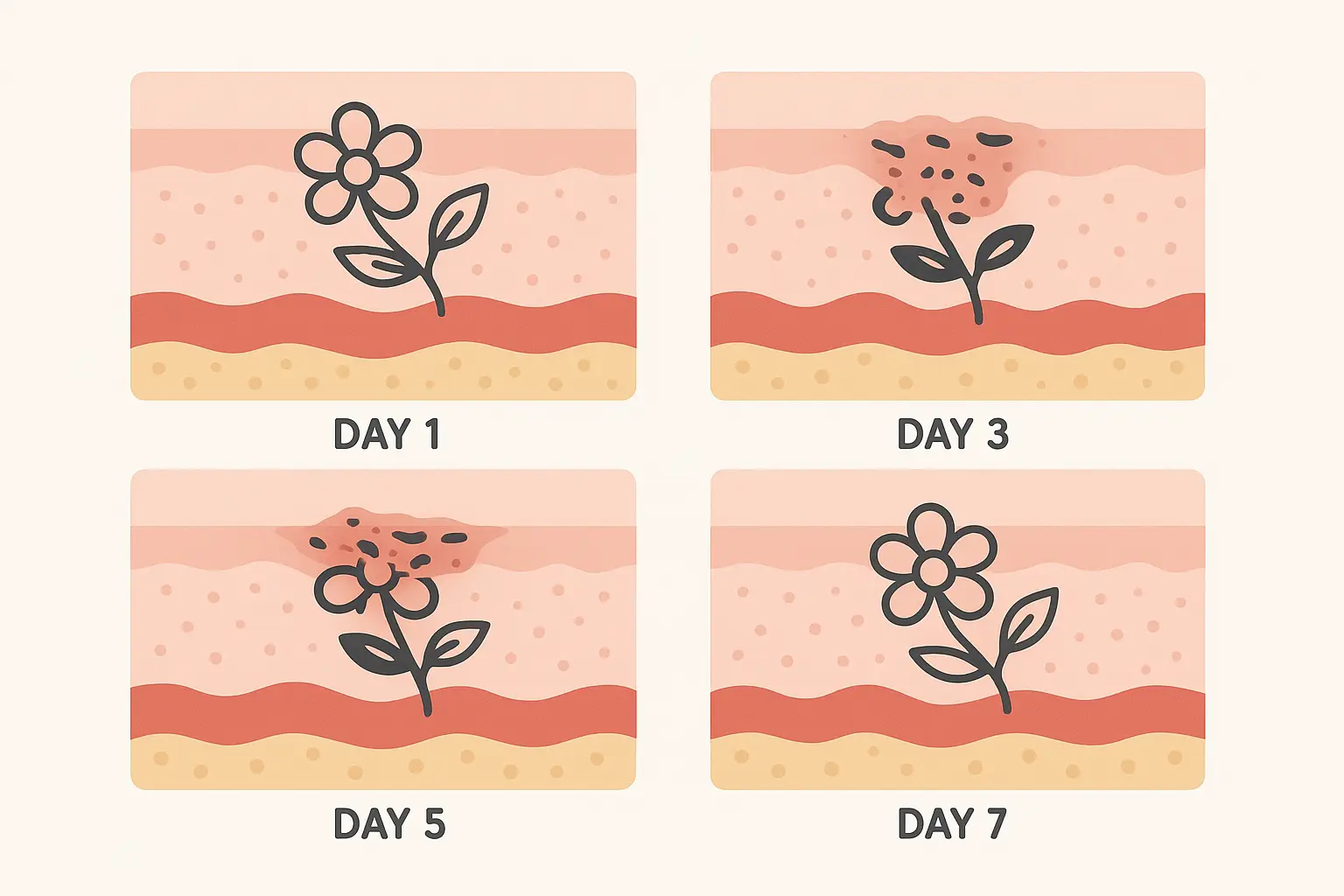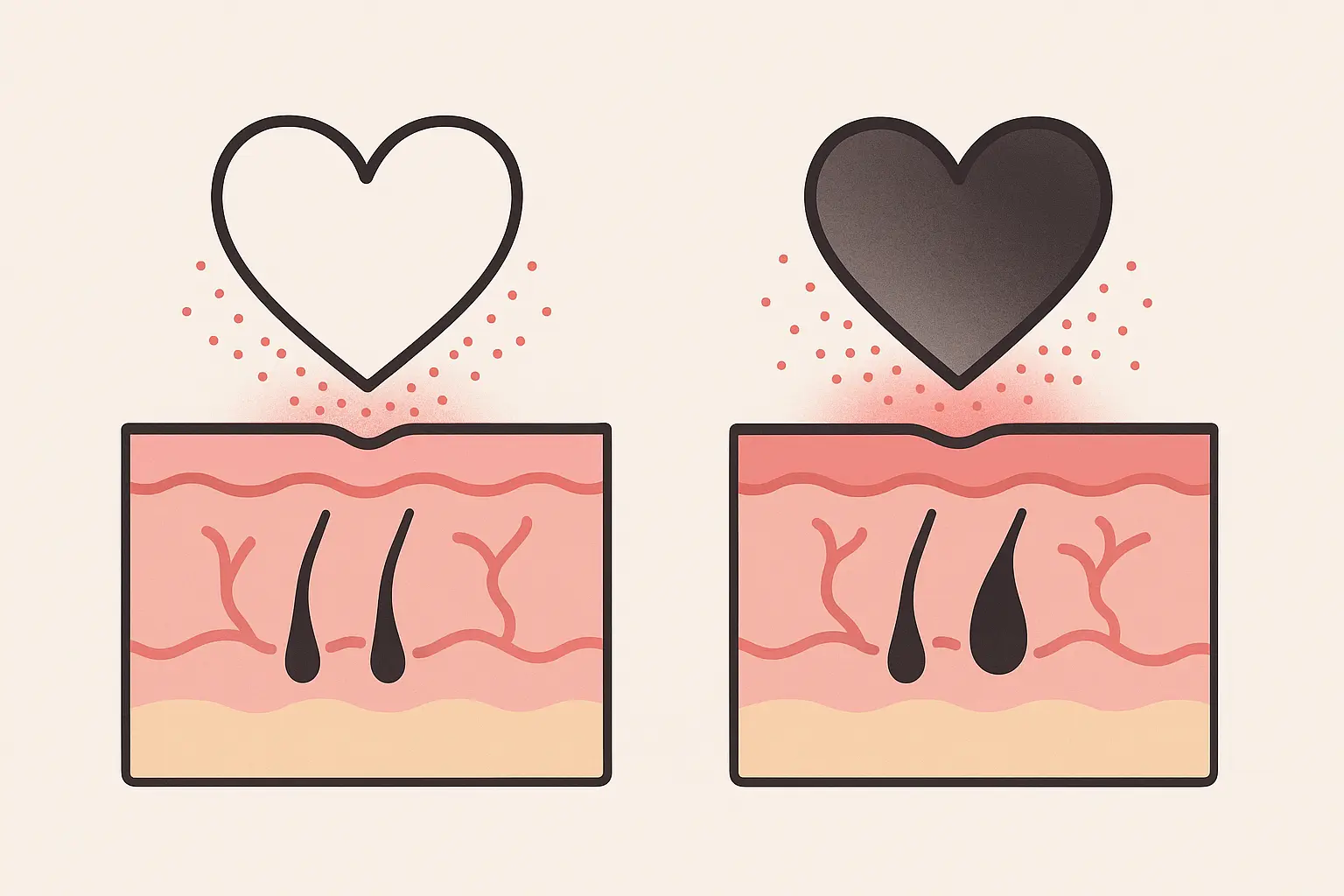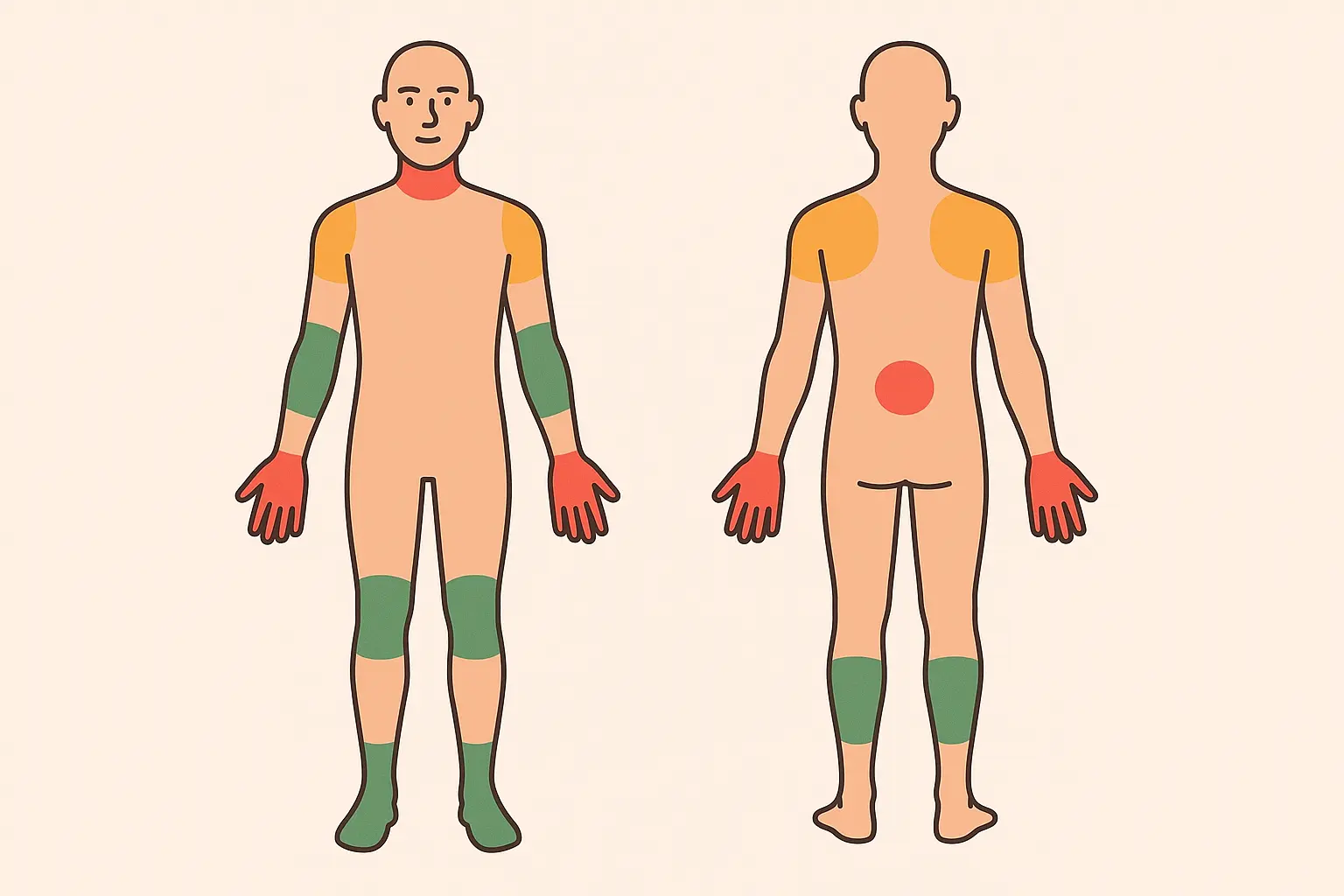The Tattoo Healing Timeline Nobody Talks About: What Really Happens Under Your Skin

Getting a tattoo means signing up for way more than you probably realize. Sure, everyone talks about the basic aftercare routine—keep it clean, moisturize, avoid the sun. But what’s actually happening beneath your skin? It’s honestly pretty wild when you break it down.
I’ve spent years diving deep into the science behind tattoo healing, and here’s the thing—the complete healing process goes way beyond those typical two to four weeks everyone mentions. According to research from Anatomy Tattoo, we’re looking at complex cellular processes that determine your tattoo’s final appearance and longevity. The tattoo healing timeline involves way more than just surface-level changes.
Table of Contents
-
What’s Really Happening Under Your Skin: A Cellular Journey
-
How Your Environment Affects Healing
-
The Nervous System Changes Nobody Mentions
-
Light, Sleep, and Other Healing Factors
-
The Real Timeline (Not What Everyone Tells You)
-
Why Size and Location Actually Matter
TL;DR
-
Your immune system’s cleanup crew gets stuck trying to process ink particles in the first 72 hours—that’s why your tattoo is permanent
-
Your body’s natural sleep cycle controls peak healing between 11 PM-4 AM, making sleep quality crucial
-
Tattooing permanently changes your skin’s bacterial ecosystem and creates new nerve pathways that affect sensation for years
-
Specific light wavelengths can speed up healing by 30% while blue light from screens increases inflammation by 40%
-
Small tattoos heal in 7-10 days while large pieces need different care for different zones
-
Dense line work affects healing time more than overall tattoo size
What’s Really Happening Under Your Skin: A Cellular Journey
When you get tattooed, your immune system kicks into high gear. Think of it like your body’s security team responding to something unfamiliar—except this time, they can’t actually remove the “threat,” and that’s exactly why tattoos work.
Your body is literally rebuilding itself around those ink particles, creating new cellular neighborhoods that didn’t exist before. Most people think healing means the surface looks normal again, but that’s just the beginning.
The Cleanup Crew That Can’t Clean Up
Here’s where things get really interesting. Your immune system sends out these specialized cells called macrophages—think of them as cellular janitors. Their job is to eat up anything that doesn’t belong in your body. But here’s the kicker: tattoo ink particles are too big for them to fully digest.
So these cleanup cells basically choke on the ink particles and get stuck in your skin forever. That biological failure becomes your tattoo’s success story. Understanding these processes becomes especially crucial when you’re considering proper aftercare techniques that support rather than fight against these natural processes.
The Critical First 72 Hours
The first 72 hours are absolutely crucial. During this window, those cleanup cells are working overtime trying to process those foreign ink particles. They can’t complete the job, which creates the permanent color retention we want. But this process also creates all that swelling, tenderness, and discharge you see.
According to Celebrity Ink’s comprehensive healing guide, for the first 48 to 72 hours, your tattoo might be swollen and tender, with visible blood or ink discharge being completely normal during this critical cleanup activity period. This is literally the stages of tattoo healing in action at the cellular level.
How Your Skin Changes Forever
Normal skin cells shed every 28 days. Tattooed skin? Completely different story. Those ink-loaded cleanup cells become semi-permanent residents in your skin, creating anchoring mechanisms that change how your skin behaves forever.
Your tattooed skin develops unique properties that regular skin doesn’t have. The cellular environment becomes fundamentally different, which affects everything from temperature sensitivity to how products absorb.
The Healing Sequence
The healing follows this precise sequence that’s honestly pretty amazing when you break it down. First, you get immediate clotting response in the first 6 hours—that’s your body forming barriers. Then infection-fighting cells invade between 6-24 hours for bacterial defense and debris removal.
Cleanup cells take over from 24-72 hours for ink processing and tissue repair. Finally, immune memory cells handle final cleanup from 3-14 days. Each phase needs different care approaches.
|
Healing Phase |
Timeline |
What’s Happening |
Key Processes |
What You Need to Do |
|---|---|---|---|---|
|
Clotting Response |
0-6 hours |
Blood clotting, barrier formation |
Clot formation, initial protection |
Keep bandage on, avoid movement |
|
Infection Fighting |
6-24 hours |
Bacterial defense |
Debris removal, infection prevention |
Gentle cleaning, antibacterial soap |
|
Cleanup Phase |
24-72 hours |
Ink processing |
Tissue cleanup, ink stabilization |
Moisture balance, avoid over-cleaning |
|
Memory Formation |
3-14 days |
Immune memory creation |
Final cleanup, long-term adaptation |
Consistent moisturizing, sun protection |
Your Skin Literally Rebuilds Itself
Your skin literally reconstructs itself around the tattoo ink. We’re talking about new support structures and blood vessel patterns that are different from regular skin. This reconstruction affects both texture and temperature of healed tattoos.
New Support Networks Form
New support fibers form in specific patterns around ink deposits. That’s why healed tattoos often feel slightly raised and have that unique way light reflects off the surface. This restructuring is permanent and contributes to the distinctive appearance of tattooed skin.
Your Blood Vessels Adapt
Your body develops new blood vessel networks around tattooed areas to support ongoing cellular activity. Ever notice how tattoos can feel warmer than surrounding skin during healing? Those new blood vessels remain active long after healing completes.
Take a large shoulder piece with heavy black shading. During weeks 2-4, you might notice the heavily shaded areas feel consistently warmer to the touch than the line work areas. This temperature difference reflects increased blood vessel activity supporting higher concentrations of ink particles in shaded regions. How long does a tattoo take to heal depends partly on how well these new blood vessel networks establish themselves.
Your Lymphatic System Gets Involved
Your lymphatic system plays this crucial role that most people completely ignore. It affects both healing timeline and long-term tattoo appearance by processing excess ink and creating lasting immune system changes.
Where Extra Ink Goes
Excess ink particles travel through your lymphatic system to nearby lymph nodes, where they can remain permanently. Sometimes this causes slight discoloration of the nodes themselves. Completely normal part of tattoo integration.
Drainage Affects Your Results
Proper lymphatic drainage during healing prevents ink migration and reduces blowout risk. Understanding these pathways helps optimize healing outcomes through gentle massage techniques.
Your Body Remembers
Your lymphatic system creates immune memory of the tattoo ink. This explains why touch-ups integrate differently than original work and why some people develop delayed reactions years later. This memory system affects all future tattoo work.
How Your Environment Affects Healing
Your environment doesn’t just affect surface healing—it actually influences how your genes work in your skin cells. This creates personalized healing patterns that explain why identical tattoos heal differently on different people. These environmental factors create lasting changes at the genetic level.
Your Body Clock Controls Healing
Your body’s natural 24-hour biological clock dramatically affects tattoo healing speed and quality in ways that most healing advice completely ignores. Working with these natural rhythms can significantly improve healing outcomes.
Tattoo healing time gets optimized when you understand these biological rhythms instead of fighting against them.
Peak Healing Hours
Skin cell regeneration peaks between 11 PM and 4 AM. Sleep quality during the first two weeks becomes crucial for optimal healing and color retention. Missing these peak repair windows can extend healing time significantly.
Research from Celebrity Ink indicates that the complete healing process can take three to six months, with the skin beneath the tattoo continuing to rebuild its structure long after surface healing appears complete.
Hormone Cycles Matter
Stress hormones, growth hormone, and sleep hormones fluctuate throughout the day creating optimal and suboptimal healing windows. You can leverage these cycles for faster recovery by timing aftercare activities for maximum benefit.
Smart Healing Schedule:
-
Plan tattoo appointments for morning hours when stress hormones are naturally elevated
-
Apply moisturizer during evening hours (7-9 PM) when skin absorption peaks
-
Ensure 7-9 hours of quality sleep during first two weeks
-
Avoid late-night screen time that disrupts sleep hormones
-
Schedule gentle cleaning sessions before bedtime
-
Take healing supplements in the evening for maximum absorption
Your Skin’s Bacteria Change
Tattooing permanently alters your skin’s bacterial ecosystem, creating new microbial communities that affect long-term skin health and tattoo appearance. These changes can be beneficial when managed properly.
Good Bacteria Move In
Healthy skin bacteria that colonize healing tattoos can actually improve ink retention and reduce inflammation. Probiotic skincare becomes potentially beneficial for supporting these beneficial bacteria and enhancing healing outcomes.
Better Infection Resistance
Well-healed tattoos develop enhanced resistance to certain skin infections due to altered immune activity in tattooed areas. This increased resistance is one of the unexpected benefits of proper tattoo healing.
Recent developments in tattoo aftercare have shifted toward understanding individual skin needs. As noted by “How to Tell Your Tattoo Isn’t Healing Properly” from Glam, experts now recognize that healing timelines vary significantly based on individual factors, with some clients taking longer to heal depending on sizing and detailing of the tattoo.
This individualized approach aligns with modern understanding of the peeling process as a natural part of skin regeneration rather than a universal timeline.
Your Genetics Affect Nutrition Needs
Your genetic variations in processing specific nutrients directly affect how quickly and effectively your tattoo heals. This explains why generic healing advice doesn’t work for everyone. Personalized nutrition approaches yield better results.
Vitamin C Needs Vary
People with certain genetic variants need 3-5 times more vitamin C for optimal collagen synthesis during tattoo healing. Most healing guides recommend the same amount for everyone, but understanding your genetic needs improves healing speed.
Zinc Absorption Differences
Genetic differences in zinc absorption can extend healing time by 2-3 weeks. Personalized supplementation becomes more effective than standard recommendations. Testing and adjusting zinc levels can dramatically improve outcomes.
The Nervous System Changes Nobody Mentions
Your nervous system creates new neural pathways around tattoos that affect both healing and long-term sensation. We’re talking about complex brain rewiring that most people never consider. These changes create lasting alterations in how your brain processes sensations from tattooed areas.
The healing tattoo process involves neurological adaptations that continue long after the surface appears normal.
Pain Memory Gets Rewired
Your nervous system develops lasting changes in how it processes sensations from tattooed areas, creating unique sensory experiences that can persist for years. This neurological adaptation explains why healed tattoos feel different from regular skin.
The neurological changes during healing connect directly to pain perception patterns that influence how different body areas respond to the tattooing process.
Pain Receptors Adapt
Pain receptors in tattooed skin become less sensitive to certain types of stimuli while becoming more sensitive to others. This creates the unique sensation profile of healed tattoos. This adaptation happens gradually over months following initial healing.
Your Brain Rewires Its Maps
Your brain literally rewires its sensory maps to accommodate the new tattooed area. Some people report phantom sensations or heightened awareness of their tattoos. This rewiring process continues for up to a year after getting tattooed.
My friend Sarah got this huge dragon tattoo on her back, and she told me the weirdest thing—for months afterward, she could feel temperature changes way more in that spot. She’d notice cold drafts or warm sunlight more intensely on the tattooed skin compared to surrounding areas, as her nervous system recalibrated sensory processing.
Stress Response Changes
Tattooed areas develop altered stress responses at the cellular level, affecting how your skin reacts to future trauma, sun exposure, and aging. Understanding these changes helps with long-term tattoo maintenance.
Stress Hormone Sensitivity Changes Chronic stress can permanently alter healing quality by changing how tattooed skin responds to stress hormones. Stress management becomes crucial during the healing window. High stress levels during healing create lasting negative effects.
Blood Flow Patterns Adjust
The autonomic nervous system adjusts blood flow and immune responses in tattooed areas differently than regular skin, affecting long-term tattoo maintenance needs. These adjustments influence how tattoos age over time.
Light, Sleep, and Other Healing Factors
Emerging research suggests that healing optimization requires understanding how light, electromagnetic fields, and cellular processes influence tattoo integration. These cutting-edge concepts are changing how we approach tattoo aftercare.
Light Therapy Effects
Specific wavelengths of light can dramatically accelerate or impair tattoo healing through mechanisms that operate at the cellular energy level. Light therapy is becoming a game-changer for serious tattoo enthusiasts.
Red Light Benefits
660-850nm wavelengths can increase cellular energy production by up to 30% in healing tattoos, but timing and intensity must be precisely calibrated to avoid ink degradation. Professional-grade devices yield the best results.
Blue Light Problems
Excessive blue light exposure from screens can disrupt natural healing rhythms and increase inflammation markers in healing tattoos by up to 40%. Managing screen time becomes crucial during the healing window.
Professional tattoo artists report that the body’s full healing process can actually take up to 6 months, with the bulk of healing happening in the first three weeks and requiring careful attention to environmental factors like light exposure. How long do tattoos take to heal depends significantly on managing these environmental variables.
Electromagnetic Field Effects
Your body’s natural electromagnetic field patterns change around tattoos, potentially affecting healing speed and long-term tattoo stability. These interactions are just beginning to be understood by researchers.
Grounding Techniques
Specific grounding practices and electromagnetic field management can enhance healing by optimizing the electrical environment around healing tattoos. Simple techniques can yield measurable improvements.
Device Interference
Common electronic devices can create electromagnetic interference that disrupts cellular healing processes. Device management becomes part of optimal healing protocols. WiFi routers and cell phones are the biggest culprits.
The Real Timeline (Not What Everyone Tells You)
Look, forget everything you’ve heard about tattoos being “healed” in two weeks. That’s just when they stop looking gross on the surface. The real story is way more complicated, and honestly, most people have no clue what’s actually happening under their skin.
Tattoo healing day by day is like watching a slow-motion construction project under your skin, with specific things happening that you need to know about.
The Critical First Week Breakdown
The first week is absolutely brutal for your body, even if your tattoo doesn’t look that bad. Every single day, different stuff is happening that affects how your tattoo will look forever. Miss this up, and you’re stuck with the consequences.
The tattoo healing stages during this first week literally determine whether you’ll love or hate your tattoo in six months.
Day 1-3: Your Body Freaks Out (In a Good Way)
Those first three days? Your immune system is having a complete meltdown trying to figure out what just happened. All that oozing and weirdness isn’t gross—it’s actually your body working overtime to deal with the fact that you just forced foreign particles into your skin.
First 72 Hours – Don’t Mess This Up:
-
Keep that bandage on as long as your artist said (don’t peek early like everyone does)
-
When you do take it off, do it in the shower with lukewarm water
-
Clean it gently—you’re not scrubbing a dirty pan
-
Pat it dry with paper towels (your bathroom towel is gross, trust me)
-
Thin layer of moisturizer, not a thick glob
-
Wear loose clothes or you’ll regret it
-
Change your sheets and sleep carefully
-
Watch for anything that seems really wrong
Day 4-7: The Fake-Out Phase
Days 4-7 are when your tattoo starts looking more normal, but this is actually when a lot of people screw things up. Your skin is building this protective layer, and if you mess with the moisture balance, you’ll get scabbing that can pull ink right out of your skin.
Modern tattoo artists are finally catching on to this. According to “Best Tattoo Aftercare Products” from Fashion Beans, they’re telling people to avoid those thick petroleum products for the first few days because they can actually trap moisture and cause problems.
The Sneaky Second Week
Week two is where everyone gets cocky. Your tattoo looks fine, so you think you’re done. Wrong. This is actually when some of the most important stuff is happening deep in your skin, and if you’re not careful, you can mess up months of healing.
How long does it take for a tattoo to heal becomes a trick question when you realize the surface is lying to you about what’s happening underneath.
Your Skin Is Rebuilding Itself
Even though everything looks normal, your skin is basically doing major construction work underneath. New collagen is forming, blood vessels are rearranging, and your ink particles are still moving around trying to find their permanent home.
Don’t Move Too Much (Seriously)
This is when people go back to yoga or hit the gym hard and wonder why their tattoo looks blurry later. Those ink particles aren’t locked in place yet. Stretch your skin too much, and you’re asking for permanent problems.
I know a yoga instructor who got a delicate wrist tattoo and went right back to her normal routine after a week because it “looked fine.” Three months later, all those fine lines had spread and blurred because she kept doing downward dog and arm balances. The surface looked healed, but underneath, everything was still settling.
Why Size Actually Matters
Small tattoos and big pieces heal completely differently, but nobody tells you this. Everyone just says “keep it clean and moisturized” like a tiny heart on your wrist is the same as a full back piece.
How long do small tattoos take to heal isn’t just a smaller version of how long big ones take.
Small Tattoos: Fast But Tricky
Tattoos under 2 square inches usually look healed in about a week, but here’s the thing—if they’re really detailed with lots of fine lines, they can actually take longer than a simple large tattoo. It’s not about size; it’s about how much trauma you put the skin through.
Understanding this becomes super important when you’re thinking about simple tattoo designs that might look easy but are actually packed with detail.
Big Tattoos: It’s Complicated
Large tattoos are like managing multiple healing zones at once. Different parts heal at different speeds, so you can’t just treat the whole thing the same way. The outline might be fine while the shaded areas are still angry and swollen.
How long does a tattoo take to heal depends on way more factors than most people think about.
|
Tattoo Size |
How Long It Looks Healed |
How Long It’s Actually Healed |
What Makes It Complicated |
|---|---|---|---|
|
Small (under 2 sq in) |
7-10 days |
2-3 months |
Dense line work hits harder than you think |
|
Medium (2-6 sq in) |
10-14 days |
3-4 months |
Different areas heal at different speeds |
|
Large (6-12 sq in) |
14-21 days |
4-5 months |
You’re basically managing multiple tattoos |
|
Extra Large (12+ sq in) |
21-28 days |
5-6 months |
Get ready for a long journey |
Why Size and Location Actually Matter
Here’s what nobody tells you: the size of your tattoo matters way less than how much detail is packed into it. A small, intricate mandala can take longer to heal than a simple large design because it’s all about how much you traumatized the skin.
The tattoo healing process and tattoo healing time have more to do with how dense the work is than how big the overall tattoo is.
Line Work vs. Shading: Different Games
Dense line work creates these overlapping trauma zones that take forever to calm down. Heavy shading is like a different kind of injury altogether. If you’ve got both in the same tattoo, you’re looking at different healing timelines for different parts.
Where You Put It Matters More Than You Think
Getting tattooed on your ribs versus your forearm isn’t just about pain—it’s about completely different healing experiences. Some spots on your body just suck at healing, and you need to know that going in.
Location matters so much when you’re choosing between various tattoo placements because each spot has its own healing personality.
The Problem Areas
Joints and anywhere that moves a lot will take 40-60% longer to heal because you’re constantly reopening the healing tissue just by living your life. Your ankle tattoo isn’t healing slowly because you did something wrong—ankles just suck at healing.
Areas with crappy blood flow like your lower legs or outer forearms need extra help. You might need to prop them up when you’re resting or do gentle exercises to get blood moving.
Real Talk About Body Placement:
-
Joints and bendy spots: You’re going to be babying these for weeks
-
Areas with bad circulation: Elevate them when you can
-
Spots that rub against clothes: Loose, soft fabrics are your friend
-
Places that see sun: Cover them up for at least a month
-
Hairy areas: Don’t shave for 4-6 weeks (yes, it’ll look weird)
-
Sensitive skin spots: Everything needs to be gentler
The tattoo healing timeline changes dramatically based on where on your body you get tattooed and what your individual skin is like.
Line Density Affects Everything
Healing time correlates more closely with total line work inches than overall tattoo size, explaining why detailed small tattoos sometimes take longer to heal than simple large pieces. It’s all about the trauma density.
Dense Work = Longer Healing
Dense line work creates micro-trauma zones that overlap, extending inflammatory phases and requiring extended healing protocols even for smaller tattoos. Detailed work demands more patience.
Shading Creates Different Zones
Areas with heavy shading create different healing environments than line work, often healing 3-5 days slower due to increased tissue trauma and ink density. Shading adds complexity beyond just aesthetics.
When you’re ready to get that perfect tattoo design, Tattoo Generator IQ’s AI-powered platform creates detailed, professional-quality artwork that deserves optimal healing conditions. Our advanced neural networks generate intricate designs with the precision and artistry that require understanding these complex healing mechanisms to achieve their full potential. Ready to create your next masterpiece? Generate your custom tattoo design today and give it the healing care it deserves.
The Bottom Line
Look, tattoo healing is way more complex than anyone wants to admit. It’s not just “keep it clean for two weeks and you’re good.” Your body is doing this incredible biological renovation project that takes months, and the better you understand what’s really happening, the better your tattoo will turn out.
Every tattoo is basically a science experiment on your specific body. The more you know about what’s actually going on under your skin, the better you can work with your body instead of against it.
Whether this is your first tattoo or you’re adding to a collection, understanding the real healing process means your investment in quality tattoo artistry gets the care it needs for the best possible results.
Your tattoo isn’t just healing—it’s becoming a permanent part of you at the cellular level. That’s pretty amazing when you think about it, and it deserves more respect than “slap some lotion on it and hope for the best.”
